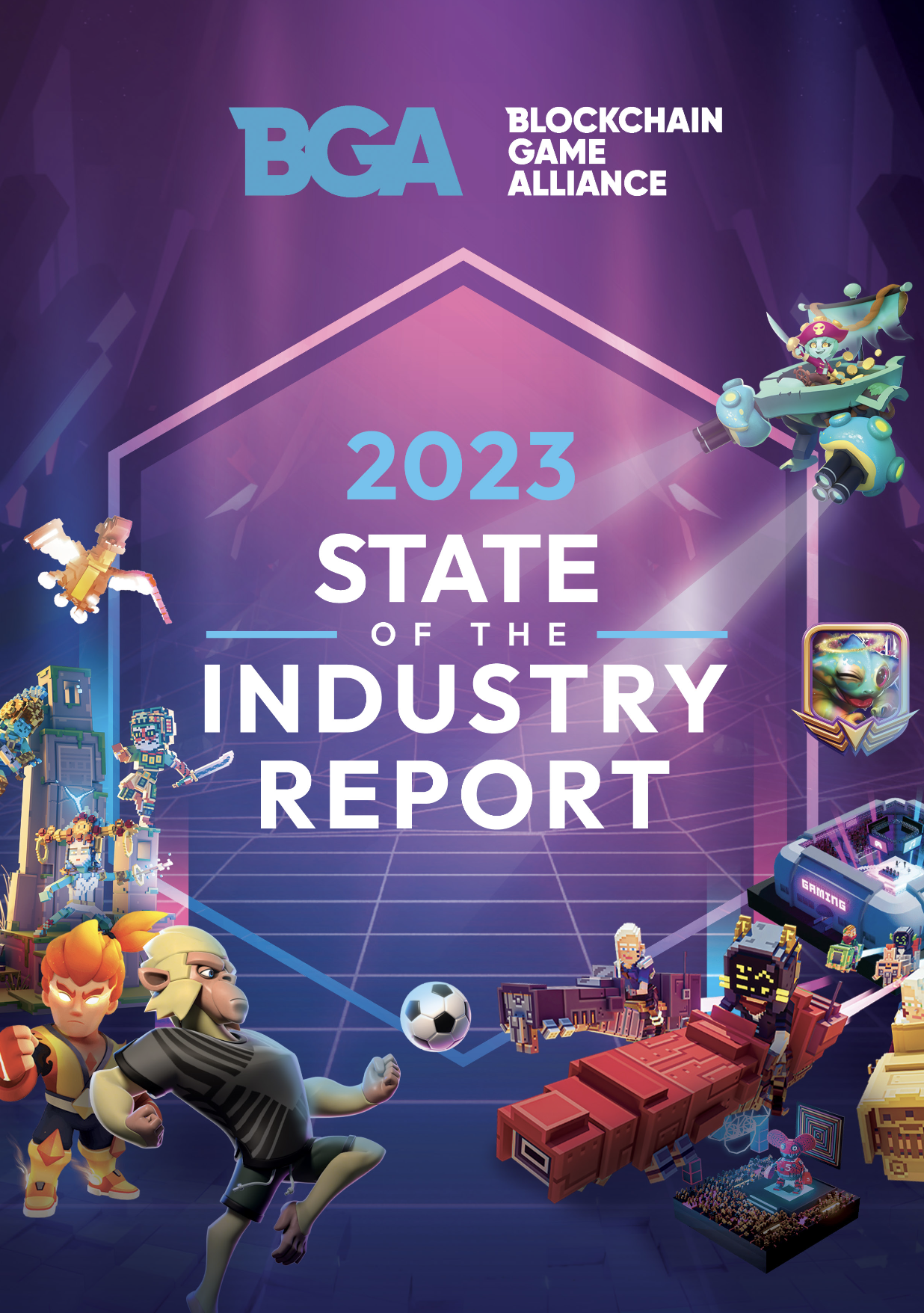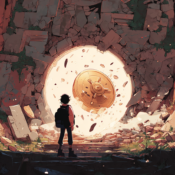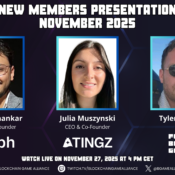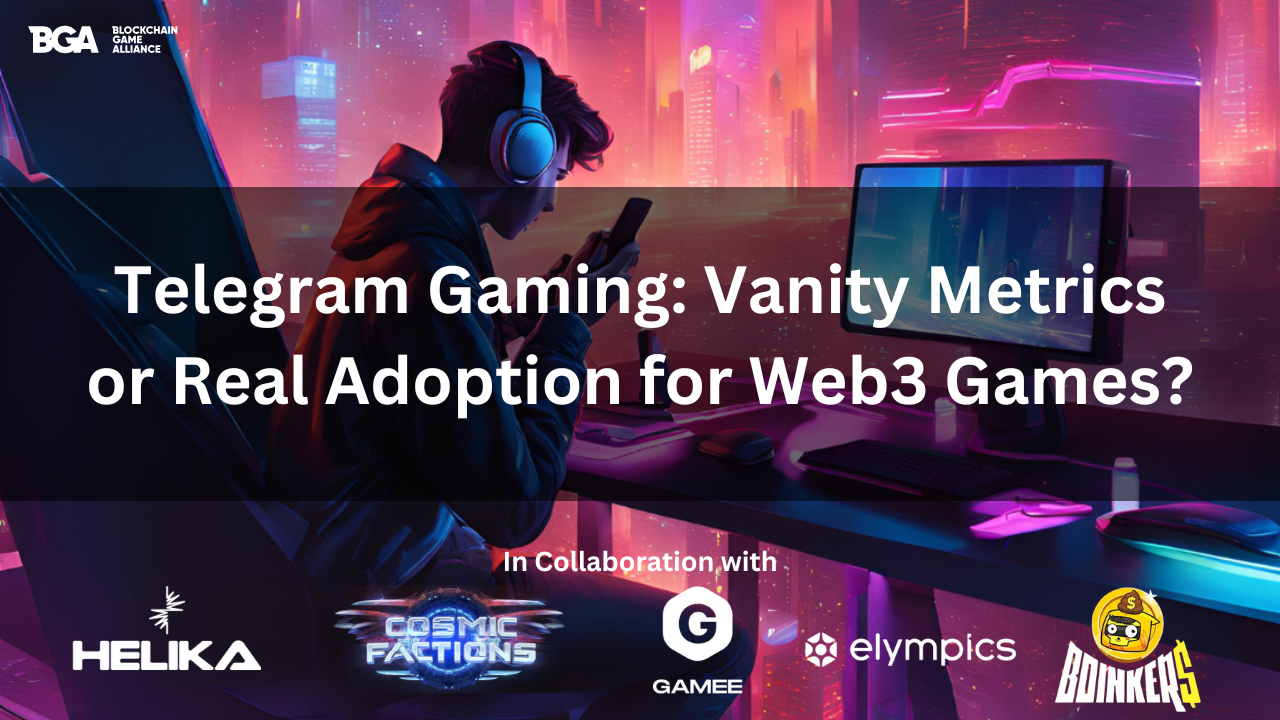
Telegram Gaming: Vanity Metrics or Real Adoption for Web3 Games?
With over 950 million users, Telegram provides an opportunity for Web3 games to gain visibility and grow their user base. Leveraging the Telegram Open Network (TON), the platform integrates crypto wallets and tokens, making onboarding, in-game purchases, and rewards more seamless than ever. This community-driven platform fosters player engagement, but are Web3 games truly gaining traction? Is it just vanity metrics, or can Telegram’s infrastructure catalyze real growth in the Web3 gaming ecosystem?
As of August, 285 games have been listed on Telegram, and the platform announced a $40 million venture fund for projects building on TON. This creates a substantial opportunity for developers to scale their games and launch tokens rapidly.
Early Feedback
One project that has been an early adopter of Telegram gaming is GAMEE. Since first announcing their intent to build on TON with the WATCoin project, GAMEE has witnessed unprecedented rapid growth. The GAMEE Community on Telegram increased from 75,000 to 4.4 million members, and the newly created WATCoin Community now totals 3.6 million members. Moreover, 4.3M wallets were connected to the GAMEE app in anticipation of September’s $WAT launch, with 88% of $WAT claimants opting to claim the majority of their $WAT later, signifying their trust in the project’s long-term vision.
Reflecting on the launch of WATCoin on TON, GAMEE CEO Martin Zakovec commented: “We see Telegram and TON as the fastest growing Web3 platform out there, and are building the foundation for long-term, sustainable success. The launch of $WAT is only the first step on a long journey”.
Games on Telegram are seeing rapid user acquisition, with some experiencing faster growth rates than on other platforms. According to Helika, a Web3 gaming analytics platform, in September alone, over 3 million active wallets were recorded across just nine games, including Catizen, GAMEE, and Cat Gold Miner.

Helika noted, “While the number of newly created wallets is interesting, more telling is the high level of activity, as players actively transfer NFTs for various purposes like gifting, purchasing, or gameplay, indicating a dynamic and vibrant ecosystem.”
User Acquisition and Engagement
It is fair to say that many games are witnessing rapid engagement with their games on Telegram, giving them the ability to acquire users at a much faster rate than previously seen.
Helika observed: “While the number of newly created wallets is an interesting metric, we dug a little deeper and found that, on the whole, users on TON are highly active. This graph shows the daily number of unique wallets transferring an NFT, whether for sending it to a friend, purchasing it, or using it within a game. Our data indicates that gamers on Telegram are not just creating wallets but are also actively engaging with NFTs, suggesting a dynamic and vibrant level of interaction within the ecosystem.”

Overall, there is a growing trend of monthly active wallets:

In line with the growth of Telegram Games, Helika, a web3 gaming analytics platform, has recently launched its Telegram Gaming Incubator in collaboration with Notcoin.
Helika has observed the Telegram gaming landscape evolve from the standard clicker games into a more complex ecosystem and is witnessing different genres of games launching on the platform.
Helika’s Telegram Gaming Accelerator (TGA), in partnership with Notcoin, aims to play a significant role in the evolution of Telegram’s gaming ecosystem. Initially, games on Telegram were simple, casual experiences with straightforward mechanics. However, the landscape has started to shift, with developers now exploring a wider range of genres and more complex game designs.
Helika’s CEO, Anton Umnov, remarked: “We have received several hundred applications for the TGA, and I see Telegram games evolving into more engaging and immersive experiences. With the rise of deeper game mechanics and stronger in-game economies, developers are moving beyond simple gaming mechanics. The focus is shifting toward long-term retention, and our role with our accelerator is to help them leverage data to maximize that potential.”

The TGA has received applications from several hundred games across various genres, including simulation, puzzle, platformers, and shooters. This diversification indicates that developers are betting that players are looking for more engaging experiences that extend beyond quick entertainment.
The Telegram Gaming Accelerator (TGA) offers developers a combination of data analytics and support aimed at helping them succeed on the platform. Through Helika’s analytics infrastructure and data analysts, participants gain access to insights on player engagement, retention, and monetization. These data-driven insights enable developers to adjust their games and strategies based on real-time performance metrics, with the goal of enhancing the overall player experience.
Developing Games on Telegram
Cosmic Factions, A pioneering blockchain-based game engine powered by revolutionary No-code AI technology, outlines the development process for building games on Telegram. Telegram mini-games and apps are often perceived as lightweight and simple, effortlessly running on any device. This perception is partly true, as many available mini-games, such as clicker games, are minimal in design and functionality. However, the widespread belief that Telegram mini-apps are inherently lightweight due to the platform’s capabilities is misleading
While many Telegram games indeed require fewer resources, this is due to the simplicity of the games themselves, not an intrinsic feature of the platform. The truth is that Telegram mini-apps are web apps operating inside Telegram’s built-in browser, and while developers often create lightweight games to ensure they run smoothly, it doesn’t mean the platform can’t handle more demanding content. However, this leads to significant development challenges, particularly when trying to build more complex or resource-intensive games.
Understanding Telegram Mini-Apps
At their core, Telegram mini-apps are web-based applications running within the platform’s built-in web browser. This allows users to access these apps without needing to download or install anything. While this system offers convenience, running apps through a browser brings inherent limitations, such as reduced access to hardware resources and potential performance bottlenecks. This means that, just like any other web app, Telegram mini-games face the same challenges, especially where performance optimization is concerned.
The common simplicity of these mini-games isn’t because Telegram can’t handle more advanced apps. Instead, developers have chosen to create less complex games due to the restrictions and constraints of the platform’s environment. More complex applications would struggle to perform well within Telegram’s built-in browser, leading to performance issues or poor user experiences.
Challenges of Developing Telegram Mini-Games
The development of Telegram mini-games involves a range of challenges that stem from the nature of web-based apps and the limitations of the platforms on which they run. These challenges can be broken down into key areas that affect game performance and user experience.
1: Performance Constraints in the Browser
Telegram mini-games run inside a browser environment embedded within the Telegram app. Unlike dedicated mobile games, which are built as native apps optimized for platforms like iOS and Android, Telegram mini-games must operate within the limitations of a web browser. This environment imposes several performance constraints, particularly when it comes to rendering graphics.
WebGL Limitations: One of the core technologies for rendering 3D games in browsers is WebGL (Web Graphics Library). While WebGL can render interactive 2D and 3D graphics, it is significantly less powerful than the rendering engines used by native apps. This results in several performance issues:
- Lower efficiency: WebGL doesn’t access hardware as effectively as native apps, resulting in lower performance.
- Resource constraints: Browser-based games have limited access to memory, processing power, and device features compared to native apps.
Running games within Telegram introduces an additional layer of resource consumption, as the Telegram app itself uses device resources. This exacerbates performance limitations, making it harder to optimize games for smooth performance. Even simple 3D games face significant challenges when trying to run efficiently within this restricted environment.
2. Device Optimization Challenges
Another issue developers face is device optimization. While desktop browsers tend to be more powerful, mobile devices are constrained in terms of processing power, memory, and battery life. Mobile browsers, despite improvements, are still not as optimized for gaming as native apps.
Mobile Device Limitations: Older or low-end devices may not fully support WebGL or struggle to maintain smooth frame rates, resulting in lag and poor performance. Running web games within Telegram further reduces the resources available to the game, causing additional slowdowns. Developers must optimize their games to work on a variety of devices, which can significantly limit the complexity of the games they can create.
3. Limited Development Tools and Engine Support
Developing games for Telegram mini-apps requires a different set of skills than creating native games. Most Telegram mini-games are built using web technologies like HTML5, JavaScript, and CSS, which are quite different from traditional game development platforms like Unity or Unreal Engine. While Unity does offer some support for web-based games, its capabilities remain limited, and Unreal Engine has almost no support for web development.
This lack of robust tooling for web-based games on Telegram means developers must build simple games or find workarounds for complex features. The limited engine support also makes it harder to build high-performance games, as the technology hasn’t evolved enough to prioritize web-based development for more intricate games.
4. WebGL and Rendering Limitations
Another significant hurdle is the rendering capabilities of WebGL, which powers most web-based games. WebGL, while functional for simple graphics, is not capable of delivering the same visual quality as native rendering engines. Complex graphical effects like 3D rendering, shadows, and lighting require heavy optimization, and even then, the results are often subpar compared to native apps.
Browser Environment: Additionally, browsers are sandboxed, meaning they have limited access to device resources, leading to further performance drops. Running games within Telegram exacerbates these issues, as the app itself consumes resources, making it difficult for developers to implement advanced visual features or maintain smooth performance.
iOS Limitations: iOS devices, in particular, face significant restrictions when running web games. Safari, the default browser on Apple devices, limits access to system resources, making it even more challenging for web games to deliver a high-quality experience. As a result, developers must make compromises, often sacrificing graphical quality and performance.
The Future of Telegram Mini-Games
While the challenges might make building 3D games on Telegram seem impossible, the truth is that it’s difficult but not unattainable. The key to success lies in custom solutions, like the ones we’ve developed with our own game engine. CosmicEngine allows developers to overcome many of the challenges inherent in building games for Telegram by creating custom solutions that push the platform’s limits. With multiple custom shaders and optimizations, we’ve been able to bring the game quality of Telegram Mini Games built with CosmicEngine to an app store-like standard. These games showcase high-quality graphics and smooth performance, proving that Telegram can handle much more than just simple clicker games. Beyond CosmicEngine, Cosmic Factions has also tackled another major challenge of integrating app wallets into Telegram Mini Apps with Cosmic MiniApp, which enables seamless in-app wallet support and on-chain transactions.
Building high-quality 3D games for Telegram is a complex task, but we’ve demonstrated that it is possible. As Telegram Mini Apps evolve and further advancements are made, more solutions will become available, and we are committed to leading the charge in bringing Telegram games to the next level.
3D Mini Game made with the CosmicEngine
2.5D Mini Games made with the CosmicEngine


Vanity Metrics or Greater Adoption?
In light of the number of games building developed for Telegram and the surrounding infrastructure supporting this movement in terms of tools, funding, and services. It is clear that Telegram gaming is moving beyond the initial hype and becoming a clear part of the web3 gaming ecosystem.
Helika observed interesting numbers dispelling the vanity metrics that most developers post publicly; for example, we have seen longer session times (the average session length has increased from 2.8 minutes to 6.7 minutes) and improved player retention as games become more immersive and varied.
For example, in one stand-out example, one of the games has shown that, despite having a relatively small user base of 3,000 registered users, it achieved an impressive DAU/MAU ratio of 45%. This indicates that nearly half of its monthly active users engaged with the game daily, reflecting a high level of user retention and engagement. Additionally, the game generated a trading volume of $550 million, demonstrating both strong user activity and significant financial performance. These metrics highlight the game’s ability to drive sustained engagement and deliver exceptional results in terms of user interaction and monetization.
For reference in the Web2 World:
- A DAU/MAU ratio of 20-30% is considered average for most apps.
- A ratio above 40% is generally seen as high engagement, which is great for games, social platforms, and apps aiming for frequent usage.
Challenges for Telegram games
Through its data-driven analysis, Helika has identified some key challenges for Telegram developers that fall into three key areas:
- Creating games that resonate with players and ensuring high engagement and retention. Developing a game that captures user interest and keeps players coming back requires more than just “simple” mechanics; it involves fine-tuning various aspects of gameplay to meet evolving user expectations. Helika’s data infrastructure is able to provide valuable insights to help developers optimize gaming mechanics, enhancing the overall gaming experience and boosting retention.
- User acquisition and go-to-market (GTM) strategy. With the recent surge in new Telegram games, discoverability has become increasingly critical. Building an initial player base and gaining traction can be difficult, particularly for teams with limited budgets for user acquisition campaigns and marketing efforts.
- Finally, funding will always be a challenge for web3 games. Standing out in the competitive web3 gaming landscape requires more than just a quality game—it demands a strategic approach to promotion, community engagement, and brand visibility. This is where smaller teams often struggle, as they may lack the resources and expertise needed to effectively implement and execute comprehensive marketing strategies.
While there are a number of challenges in building great (Telegram) games, there are many factors that make this a viable option for blockchain-based games; the ease of integration into the platform combined with the large number of users provides the perfect environment for web3 games to acquire users and grow communities.
In a recent report by Elympics, we can see that mobile gaming has risen massively over previous years and that Telegram games are an evolution of a mass audience of hyper-casual gamers. Telegram lends itself to this market of players, and it will be interesting to see this ecosystem mature as more game developers explore the platform.
“As we review the results of the 2024 Global Gaming Report, it’s clear that Web3 is becoming a key driver of engagement in the growing niche of competitive gaming. Players are increasingly attracted to games and protocols that offer not only casual and hyper-casual experiences but also the ability to earn tangible rewards, like real-money payouts or airdrops. The report also highlights TON and Telegram position as current leaders in the space of Web3 gaming, with their broad user base and focus on on building engaged communities making it an ideal platform for Web3 gaming to thrive and evolve. At Elympics, we’re committed to supporting this growth by helping developers seamlessly build and onboard their games to the TON ecosystem, leveraging Telegram’s leading role in the Web3 gaming landscape.” – Tom Kopera, COO of Elympics
The report contains a case study from Boinkers, which outlines their experience of launching a game on Telegram, including user acquisition and growth.
Fab, Head of Business Development at Boinkers commented: “Telegram is the first consumer app globally distributed in the pockets of nearly 1 billion users, with 100 million already holding $TON in their mobile wallets. With an additional 850 million users potentially onboard, without the typical Web3 user drop funnel, Telegram should be a key part of every successful growth strategy for Web3 games.“
Summary
The future of Telegram gaming looks promising as the platform evolves beyond simple mini-games into a richer ecosystem of more complex and engaging experiences. With the continued development of tools like CosmicEngine and the support of initiatives like Helika’s suite of analytic tools and their collaboration with Notcoin to launch the TGA, the potential for high-quality Web3 gaming on Telegram is becoming a reality. As the platform’s infrastructure strengthens and more games join the ecosystem, we can expect to see sustained user engagement capitalizing on the platform’s 9 million + users to see increased adoption and the growth of a thriving Web3 gaming community.
What are your thoughts on telegram games? Let us know in the comments below.
Tags
Recent Posts
